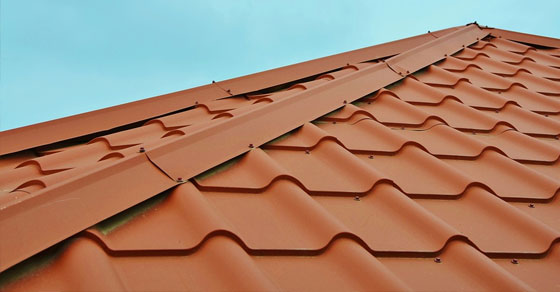Today, metal roofing is more attractive and durable than ever before in the history of it. This is due to the fact that there have been numerous innovations not only in the metal roof materials, but also in the other components that are necessary for a quality installation. One such component is the underlayment material. Since there are different types of underlayment, you must choose the right one to ensure that your metal roof is as durable as possible. When you fail to do so, you leave the roof at risk of exposure to damaging elements such as moisture, chemicals and resins. We share further facts in the following to help you make an educated decision.
What Is the Purpose of Underlayment?
An underlayment separates the sheathing and other structural roof components from the surface roofing material. Its purpose is to provide protection to all of the structural components from potentially dangerous substances including moisture, resins and chemicals. This ensures that the roof’s support system last for as long as it should for the house or building.
The Different Types of Underlayment
1. Felt underlayment is probably the most well-known and affordable underlayment on the market at present. It is made from asphalt-soaked felt and can be of natural materials such as wood cellulose or synthetic ones such as fibreglass. This underlayment does not offer high-quality resistance to moisture migration or incoming air. As a result, it needs to be installed on roofs with a suitable pitch that will not suffer significant moisture loads. However, it is ideal to use with ice dam protection at certain critical points on the roof in cold environments.
2. Synthetic underlayment is made of polyolefin, polypropylene or polyethylene usually and ranges in thickness from eight to 30 mils. In comparison to felt underlayment, synthetic underlayment is at less risk of wind damage and lies suitably flat after installation. Similar to the felt underlayment, it is an affordable option. Also, is it suitable for cold weather installation and as a moisture barrier? It does not qualify as an air barrier, though, for your roof.
3. Self-adhering membrane underlayment is a polyethylene sheet with a butyl-based or rubberized-asphalt based adhesive on it. Roofers install this product by peeling off the backing and sticking it to the roof deck or sheathing. It is extremely effective protection for standing-seam style metal roofs where ice dam protection in a must in various areas of the roof. This style of underlayment can be installed in environments that reach temperatures as high as 115-degrees Celsius. On top of all of this, this underlayment qualifies as both an air and a moisture barrier.
For further guidance on the importance of choosing the right underlayment for your metal roof, consult with Johnson Roofing. Our company has the expertise to ensure that you receive the right one for your needs and situation.

